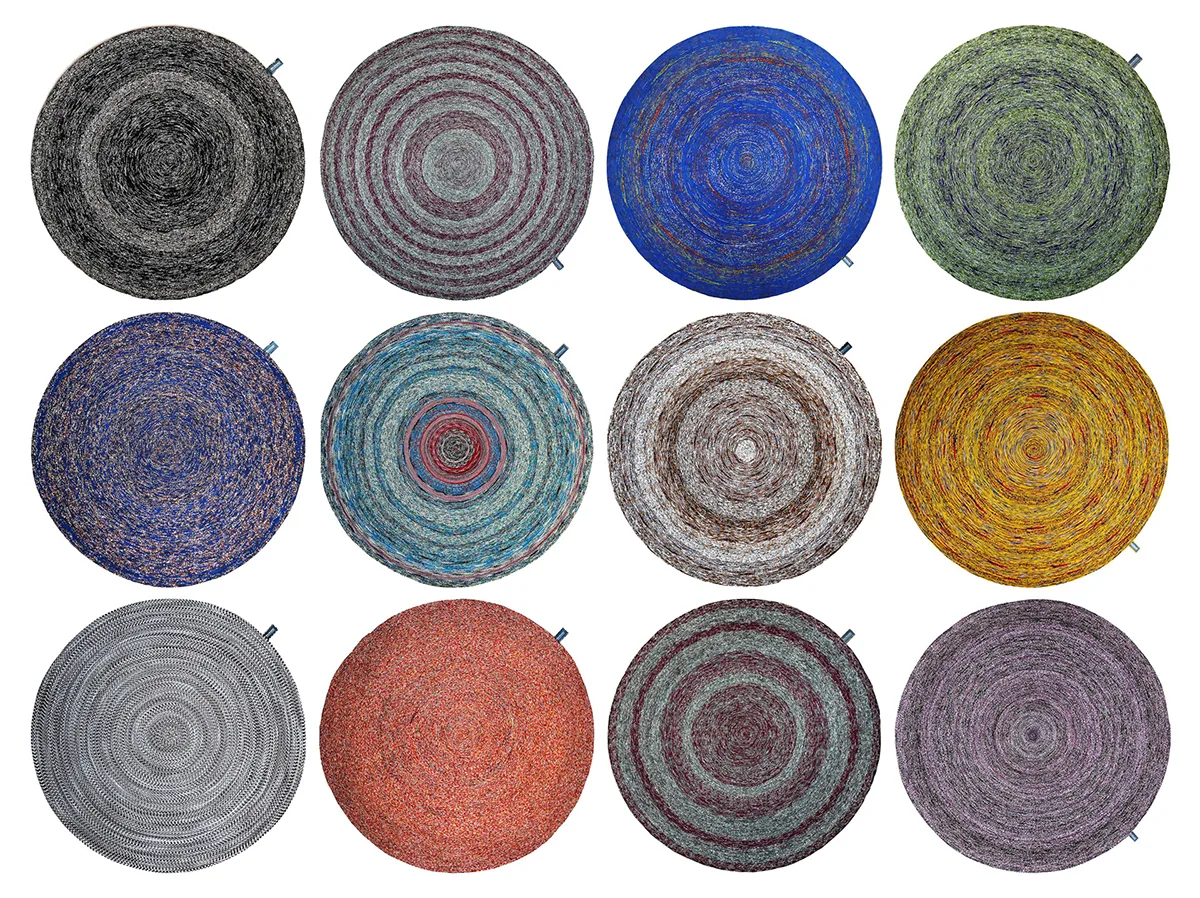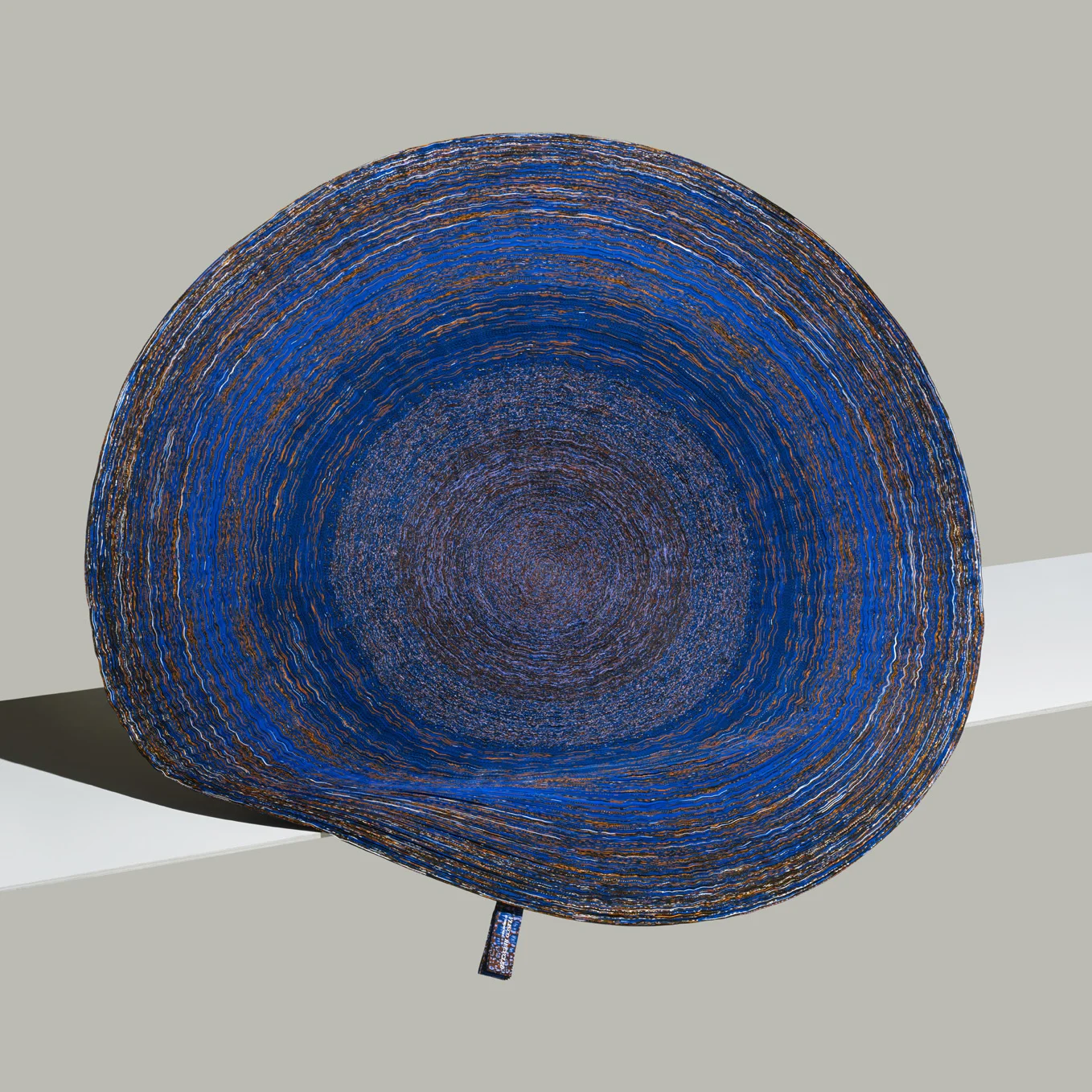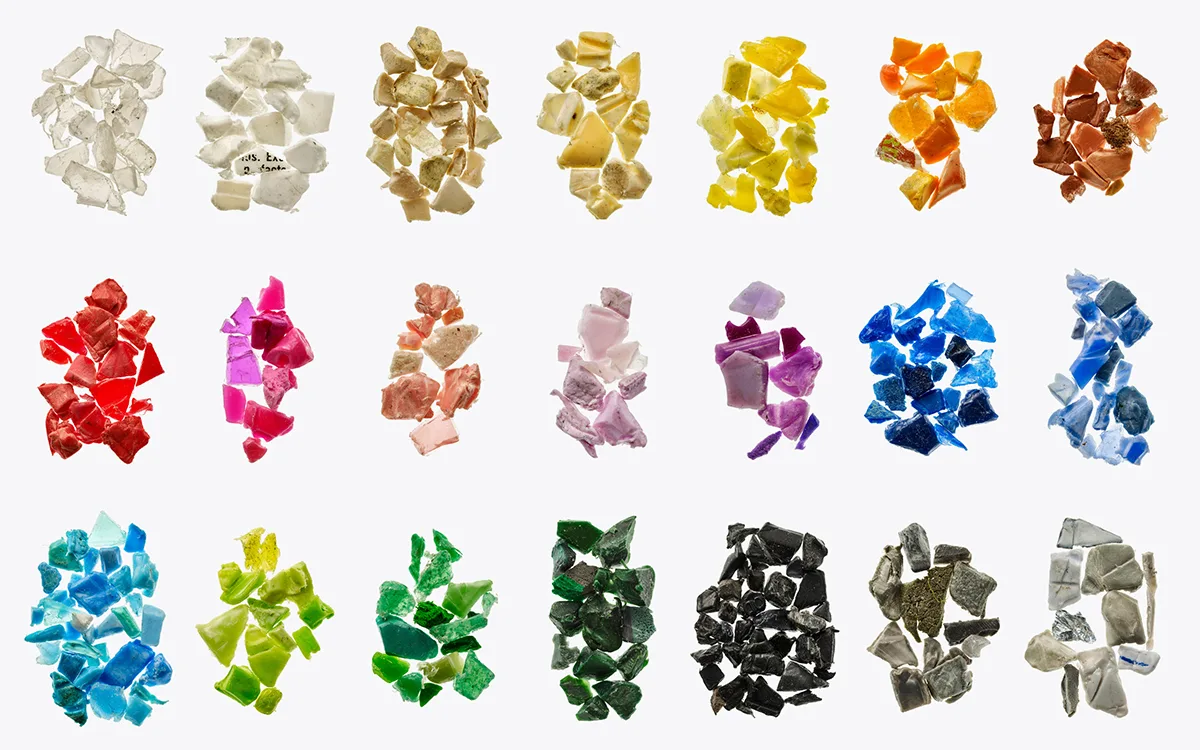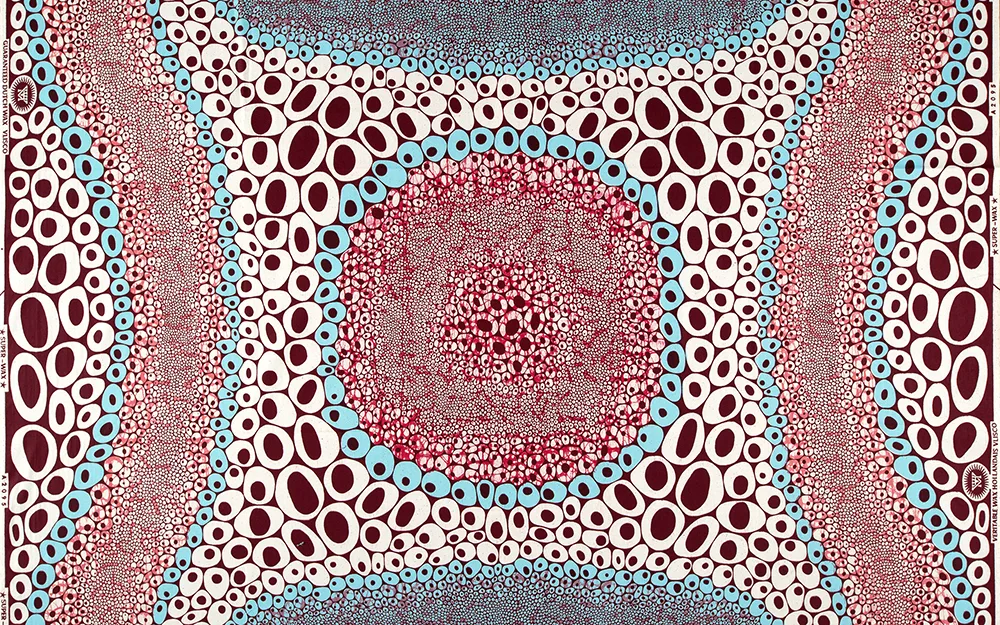

Simone Post is inquisitive. After studying at Design Academy Eindhoven, the Dutch textile and product designer interned at heritage brand Vlisco, known for making the colorful wax print fabric popular in central and west Africa.
It was here she noticed large amounts of reject material going to waste after being misprinted during the lengthy and technical process. This leftover textile couldn’t go to market, and was destroyed.

Simone wondered if there was a way to put the fabric to use that would conceal its original designs. Inspired by the color gradients created on the top and tail of a tightly wound roll of fabric, she began to intricately twist the material into a circular shape and in doing so came up with the design for her Vlisco Recycled Carpets.
Ever since, researching through making has become her way of working. She starts a project by getting her hands on the materials, trying out different techniques to see what’s possible. In this process of experimentation new ideas are born.
“You should be very open during the process to let the material become what it has to be,” Simone says. “You will get surprises – little gifts from the failures or accidents that are happening. Following this process you come to more innovative ideas, ideas you could never have thought of behind a computer or drawing table.”



Simone believes the process is more important than the final result. It’s a philosophy she shares with Iwan Pol and Sanne Schuurman – together they form a collective called envisions. On a trip to the Salone del Mobile in Milan in 2016 they noticed an overwhelming focus on the finished product.
“We saw thousands of new chairs, sofas and table designs, without a clear reason for their existence. There was really a lack of the why,” Simone says. “I think process is one of design’s defining factors, often undervalued and rarely, if ever, exposed throughout the industry.”
As an alternative to the over-polished design industry, the collective began to focus their future exhibitions on tactile research in materiality, texture, form and color, putting their process on show for all to see. Its motto is “everything but the end product,” and the results are odd collections of colorful, whimsical objects with an exciting sense of play and intrigue. The works-in-progress aim to inspire designers to think about manufacturing processes and to imagine better ways of making.
Color is paramount in Simone’s work. One of the experiments she exhibits with envisions is her collection of colorsticks – a new way she’s developed to test color combinations in woven fabrics. “I noticed it was constantly a struggle to determine how colors will mix together and respond to one another when composing woven and knitted fabrics. So I decided to dive in and analyse the subject,” she says.
To take back control of this unpredictable process, she intertwined dyed yarns over sticks in countless color pairings creating her own database for future textile designs. For her research project Precious Plastic Diamonds, Simone worked with ECO-oh!, a company that breaks down household plastics into colorful plastic chips. For a series of images she sorted the small pieces of plastic by color to reveal their beauty and hopefully inspire designers to use them to create new products.
I think process is often undervalued and rarely, if ever, exposed throughout the industry.
It’s important to Simone that her designs are not just potential. Instead, she looks for opportunities to collaborate with companies in the industry who have the scale to make a real impact on manufacturing processes.
“Corporate companies often stick to the road of proven practices and clearly defined objectives, missing the possibly fruitful alternatives discovered while taking the path less travelled,” she says. “As an outsider I’m good at looking at a process with a fresh perspective.”
Words by Alix-Rose Cowie.








